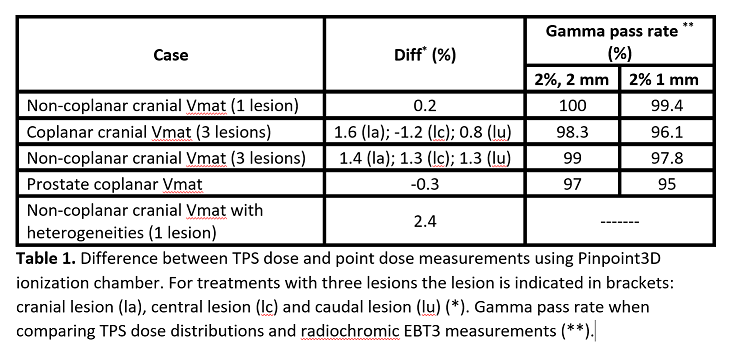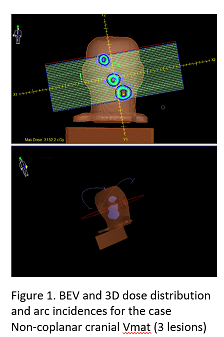End to end tests for Volumetric Modulated Arc Therapy using a new modular phantom.
Maria Trinitat García Hernández,
Spain
PO-1547
Abstract
End to end tests for Volumetric Modulated Arc Therapy using a new modular phantom.
Authors: Maria Trinitat García Hernández1, Aurora Vicedo González2, Rafael García Mollá3, Domingo Planes Meseger3, Begoña Bordería Navarro3, Patricia Calatayud Cuesta4, Maria Luisa Alcaraz Lozano3
1Consorcio Hospital General Universitario de Valencia, Radiofísica y Protección Radiológica, Valencia, Spain; 2Consorcio Hospital General Universitario de Valencia, Servicio de Radiofísca y Protección Radiológica, Valencia, Spain; 3Consorcio Hospital General Universitario de Valencia, Servicio de Radiofísica y Protección Radiológica, Valencia, Spain; 4Consorcio Hospital General Universitaria de Valencia, Servicio de Radiofísica y Protección Radiológica, Valencia, Spain
Show Affiliations
Hide Affiliations
Purpose or Objective
The
increased complexity of the radiation therapy process makes essential to
implement tests to commission the whole procedure, from de CT to the treatment
administration in the radiation unit. In this work, we use a new modular phantom
(RUBY phantom, PTW Freiburg, Germany) for the end to end testing of several
VMAT irradiations.
Material and Methods
End
to end testing was made for different Vmat treatments: A non-coplanar cranial stereotactic
treatment of one small centred lesion (volume of 0.5 cc), a cranial coplanar
and non-coplanar stereotactic treatment for three lesions and a prostate SBRT. The
main modules of the RUBY phantom were used for cranial (head phantom) and prostate
(body phantom) treatments, combined with different inserts to check point dose
and dose distributions, IGRT, heterogeneity corrections and volume calculations.
For point dose measurements, an insert consisting of three detector positions
that correspond to the centres of three assumed metastases was used, (MultiMet
insert) with a PinPoint 3D ionization chamber (PTW Freiburg, Germany). MultiMet
also contains three cylindrical volumes (made of bone equivalent material)
positioned inside at different spatial angles (visible in planar MV, planar KV
and CBCT images), to enable image registration with the reference data set. For dose distribution measurements, an insert
that accommodates a film was used (Film insert) with radiochromic film EBT3 and
Radiochromic software (radiochromic.com). To check heterogeneity corrections
and volume calculations of treatment planning system (TPS), an insert with
non-homogeneities (consisting of cylinders of different sizes around a
detector, interrupted at different points to enable image registration) was
used. Planning CT was acquired in a GE Discovery RT with 120 kV and 1.25mm
slice thickness, the TPS used was Monaco (V.5.51) and the plans were irradiated
in a VERSA Agility Linac (Elekta) with an energy of 6 MV. IGRT (kV/kV and CBCT)
was checked positioning the phantom bodies using the engraved visible lines
that indicate defined translational and rotational shifts in all three spatial
directions.
Results
For IGRT using
CBCT, differences between experimental and known shifts were smaller or equal
than 0.5 mm and 0.5º. Higher differences were found when using Mosaiq (Elekta)
fusion software (instead of Elekta-XVI software), due to rounding. Differences
were lower or equal than 1.5 mm when using kV/kV IGRT. Differences in volume
calculations (between TPS and Ruby phantom specifications) for heterogeneous
inserts are lower than 1.5 %. Table 1 shows the results for point dose and dose
distribution measurements.


Conclusion
The
modular QA Ruby phantom has been successfully used to check different steps of
the radiotherapy process. Results for end to end of several Vmat treatments
show a good performance of the whole radiotherapy procedure, with differences
< 2.5 % for dose measurements and gamma passing rates > 97 % (2%, 2 mm).